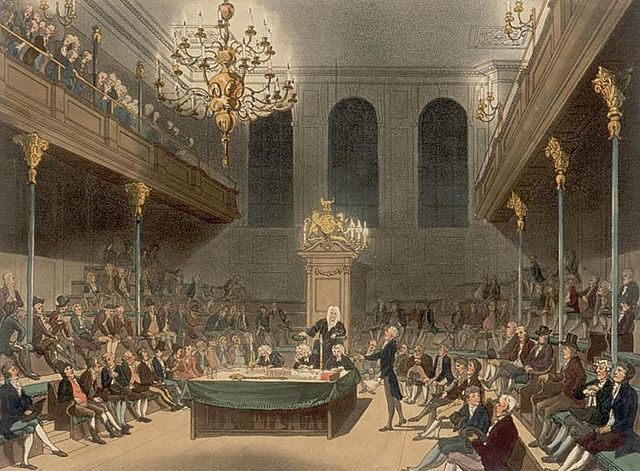Asking the Tough Questions With an 18th-Century Debate Society
Is polygamy justifiable? Is it lawful to eat swine’s flesh?

In November 1788, a group of fine young men founded one of New York’s original social clubs, which they named the Calliopean Society. The club had an “express purpose”—to improve the educations and minds of its 20-odd members.
At every meeting, club members gave speeches, presented essays, and debated important questions of the day: Has the discovery of America been of general good for mankind? Is war justifiable? Should any crimes besides murder be punished with death? Sometimes they even talked about girls. (Is beauty or wit more beneficial to the fair sex?)
The society was “one of the first of a type of masculine literary cabal that would become common after 1800,” writes David S. Shields, an English professor at the University of South Carolina. Over time, club society flourished in New York, encompassing everything from James Fenimore Cooper’s Bread and Cheese Society (its name came from the tokens used to elect new members) and the Turtle Club, whose beefsteak dinners the writer Joseph Mitchell memorialized, and evolved into more modern forms such as the Players Club, a private social club for people in theater and arts, or the Wing, a modern club for New York women.
Then as now, New York’s original 18th-century social clubs were formed, in part, to enhance the social status of their members. At a time when few people had access to intensive education, young men of ambition started forming clubs to improve their minds and enhance their reputations as political and literary movers and shakers. “Writing and publishing meant asserting their political worth in the new republic,” writes Andrew L. Hargroder, a graduate student in history at Louisiana State University, in the New York history blog Gotham.
With the structure and camaraderie of the club to guide them, members could be bold, and take on questions and political positions that the city’s elite might not consider, in addition to publishing cheeky, amusing literary essays. By 1793, the Calliopean Society’s offshoot publication, The Drone, was presenting works such as “The Science of Lying” and “A Dissertation on Jack-asses.” One essay attempted to assess, with candor, the character of one of the club’s members, who was later revealed to be the author himself. “Tho’ far from being advanced in years,” he wrote of himself, “he is what the ladies are please to term an old bachelor; and with his present disposition he will not be soon induced to change his situation.”
One of the key ways the men of the Calliopean Society sharpened their literary skills, though, was through debate. In advance of most meetings, they decided upon a question to address. (Members were required to submit suggestions.) A rotating selection of club’s members took sides, each equally represented, and prepared their arguments. At the next meeting, each side argued its case and the members voted on the outcome.
The results were recorded in the club’s minutes, a fat book of unlined pages now held by the New York Historical Society. Below is a selection of the questions the Calliopean Society debated in 1792, the year they formed The Drone. After you submit your answers, the choice the society made will be revealed: See how close your opinions are to those of these 18th-century strivers.










Follow us on Twitter to get the latest on the world's hidden wonders.
Like us on Facebook to get the latest on the world's hidden wonders.
Follow us on Twitter Like us on Facebook